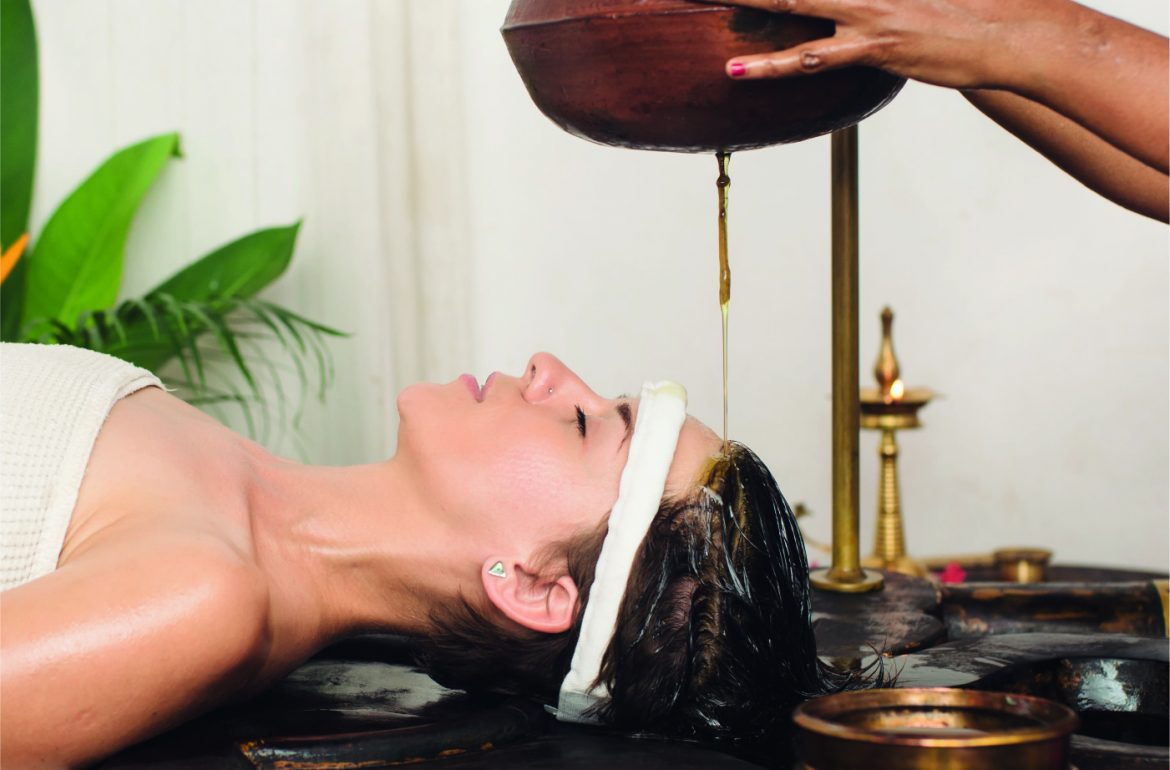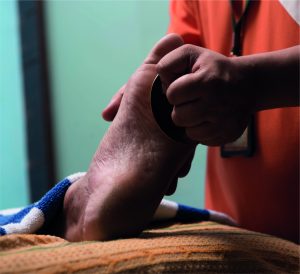What is Panchkarma Treatment in Ayurveda?

Ayurveda is a form of alternative medicine that has been around for centuries but is currently gaining popularity worldwide all thanks to its holistic benefits. These ancient Vedic practices are all about preventing ailments by treating your mind and body as a whole. The benefits of Panchakarma include purifying the body while balancing the three doshas a.k.a. Vitta, Pitta & Kapha. If you are just beginning your Ayurvedic journey, we’re sure many new terminologies might leave you in a state of confusion. Don’t fret! We’re here to help you out with this and enlighten you with some ayurvedic knowledge. Panchakarma in Ayurveda is on top of the list for any new ayurvedic beginner. This ancient practice is all about healing, rejuvenating yourself, and starting fresh.
So what is this form of treatment and what are the benefits of Panchakarma? Keep on reading to find out!
What is Panchakarma Treatment?

Panchakarma is derived from two Sanskrit words — Panch, which means 5, and Karma which means actions. Therefore, this form of ayurvedic treatment incorporates 5 procedures that aim at detoxifying the body to attain optimal health. Panchakarma in Ayurveda is built on the foundation that the human body can heal itself naturally. Unfortunately, we live in a fast-paced world that is filled with stress, bad food habits, poor lifestyle choices, smoking, alcohol, and plenty of environmental pollutants and stressors. For others, there are chronic illnesses or pre-genetic conditions. All these factors put together can wear down the body’s natural healing ability. This is where Panchkarma treatment comes in.
Panchakarma in Ayurveda is built specifically to draw out accumulated toxins from the body. By doing this, it helps restore the body’s natural healing capacity.
This treatment takes place over several days. It can last you anywhere between 7 days to 21 days depending on your current condition. In this way, your body gets plenty of time to rest and heal after each step.
Why Should You Take Panchakarma Treatment?
The benefits of Panchakarma are endless. If you’ve been feeling lethargic, stressed, unhappy lately then you should consider this course of treatment under the supervision of an expert. As stated earlier, given our hectic lifestyles, it’s only natural for the toxins to accumulate in the body causing deterioration in bodily functioning. When this happens, it weakens our immune system, making our bodies more vulnerable to viruses and bacteria, ultimately damaging our overall health.
With Panchakarma in Ayurveda, you can correct the dosha imbalances by eliminating the adverse amas out of your system.
What are the 5 Therapies in Panchkarma Treatment?
The 5 basic Shodanas in Panchakarma are as follows:
-
Vamana: Therapeutic Vomiting or Emesis
While it may seem peculiar, every step in this course of treatment aims at eliminating the toxins from the body. When it comes to Vamana, it helps clear congestion in the lungs. For those suffering from repeated attacks of bronchitis, colds, cough, or asthma, Vamana helps extract all the mucus. After this method, the individual immediately feels a sense of relief and is also able to breathe freely. Therapeutic vomiting is also beneficial for those suffering from chronic asthma, diabetes, chronic cold, lymphatic congestion, chronic indigestion, and edema.
On completing this step, the individual needs to rest, fast, and not suppress natural urges like urination, defecation, gas, sneezing, coughing.
-
Virechan: Purgation
When excess bile accumulates in the gallbladder, liver, and small intestine, it throws off your Pitta dosha. This further leads to skin issues like rashes, skin inflammation, acne. Too much bile can also result in chronic attacks of fever, biliary vomiting, nausea, and jaundice. Therapeutic laxatives are recommended in such situations. Purging your system can eliminate the excess pitta which is causing harm to the body.
During this course of treatment, the individual should avoid any food that could be hard to digest. Not doing so may affect the treatment and make the body uncomfortable and feel heavier. Stay away from foods like meat, spicy food, noodles, soya sauce, vinegar, and all kinds of sauce, eggs, alcohol, smoking, chocolates, dairy, and dairy products.
-
Basti: Enema
When it comes to the elimination of feces and other excreta, Vatta plays a vital role. Mainly located in the large intestine, if there is an imbalance in your Vata dosha, Basti can help. Basti is the process of administering oil and a herbal concoction through the rectum. This process ensures a direct cleanse of the colon and intestine. Health-wise, this process can ensure bowel regularity, joint support, nervous system support, and healthy sleep patterns.
-
Nasya: Elimination of Toxins Through The Nose
If you live in a metropolitan city, then you are probably no stranger to issues like sinus infections, migraines, throat infections, constant colds, or even headaches. This happens when excess fluids accumulate in the sinus area. This can not only lead to physical ailments but also affects your thought process, focus, memory, and consciousness.
Here’s where nasal administration Nasya helps. During this procedure, herbal medication is given through the nose. The little finger is dipped in ghee and gently inserted into the nose. The inner walls of the nose are then gently massaged.
-
Rakta Moksha: Detoxification of The Blood
Accumulated toxins, even if located only in your gastrointestinal tract, can affect your overall health! They circulate through the body when they get absorbed into the bloodstream. This is known as toxemia. Why is this bad for you? Well, toxemia can lead to repeated infections, hypertension, and certain other circulatory conditions. This includes repeated attacks of skin disorders such as urticaria, rashes, herpes, eczema, acne, scabies, leukoderma, chronic itching, or hives. In such cases, along with your prescribed medication, it is important to purify the blood. This brings us to our 5th and final step — Rakta Moksha.
Rakta Moksha is also known as bloodletting. This ayurvedic method involves the removal or displacement of impure blood from the affected body part. This treatment comes in two forms — Shastra Visravana and Anushastra Visravana. There are two types of Shastra Visravana methods. First, Pracchana, which involves letting blood pass through several incisions in the skin. Second, Sira Vedhana, which involves the removal of blood by puncturing the skin.
Anushastra Visravana is further divided into three categories — Jalauka vacharana, Alabu, Shrunga vacharana.
Jalauka vacharana involves applying leeches to the body. It is used to treat ‘Pitta’ doshas.
Alabu involves using a vegetable to create a vacuum and extract blood. It is used for treating ‘Kapha’ dosha.
Finally, Shrunga vacharanamakes use cow horns to remove blood from the infected area.
Benefits of Panchakarma Treatment

There are plenty of benefits if you choose Panchakarma in Ayurveda treatment.
- Assist in balancing all three doshas.
- Helps implement a healthy diet and lifestyle.
- Reduces stress, improves relaxation & tolerance.
- Slows the aging process.
- Boosts the body’s immunity levels.
- Improves strength, endurance, and vitality.
- Purifies the body
Who Should Take Panchakarma Treatment?
There are no eligibility criteria when it comes to who can undergo the treatment of Panchakarma in Ayurveda. Using the sodhana approach can help you achieve optimal health and help you feel energized. There are also tell-tale signs which your own body gives when you are in need of a much-needed cleanse.
- A thick layer of coating on the tongue
- Feeling tired throughout the day, especially after meals
- Uncontrollable cravings
- Foggy mind
- Bad breath, body odor, or flatulence
- Constipation or diarrhea
Keep in mind that while Ayurveda is an alternative form of treatment, certain areas do require an expert’s opinion. This is the case for Panchakarma treatments in Ayurveda. Visit the Kapiva website to get a free consultation.











